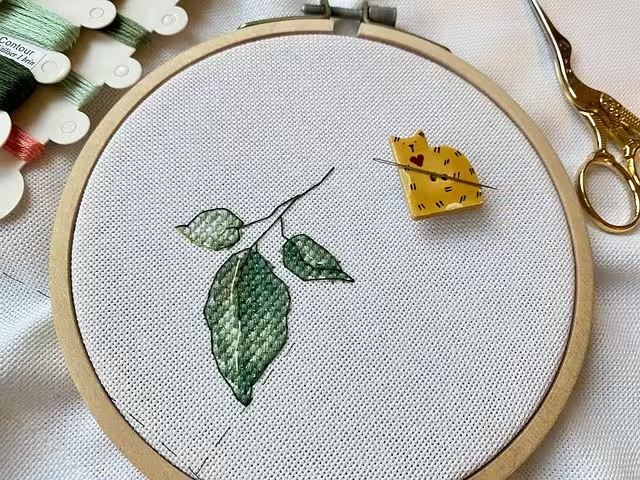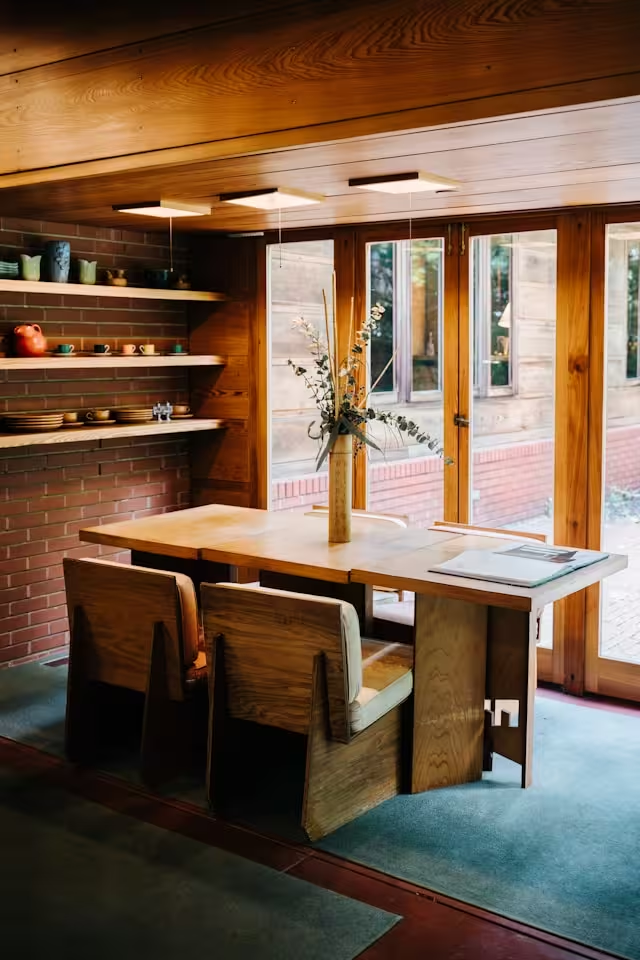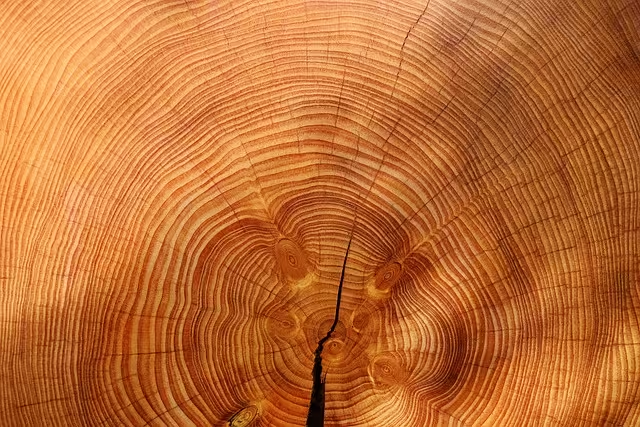Introduction: Beyond the Visual—Engaging the Body
Imagine walking barefoot across a forest floor. You feel the sharp, brief prick of a pine needle, the cool, damp give of moss, and the unyielding, rough surface of a stone. Your body makes thousands of micro-adjustments as you move. This physical, sensory-rich interaction is a primal kinesthetic experience. We have moved into a digital age that is predominantly visual, a flat plane of light and information. We have forgotten that we are not just floating minds; we are bodies. This is where kinesthetic design becomes critical.
What is kinesthetic design? It is design that engages our sense of movement, touch, and spatial awareness. It is design we do not just see, but design we feel and physically interact with. And what is “nature” in this context? It is far more than just a green color palette or a picture of a plant. It is the core of biophilia, the innate human affinity for life and natural systems. It includes the complex textures, organic patterns, and physics-based processes of the natural world.
The connection between nature and kinesthetic design is not a new trend or a superficial style. It is a fundamental, evolutionary link. Nature, in its entirety, was humanity’s first and most complex interface. It demanded full-body engagement. Our brains are not wired to stare at a static, non-responsive surface; they are wired to navigate a three-dimensional, tactile, and dynamic world.
This article will deconstruct this essential connection. We will explore how nature’s own kinesthetic language—its textures, movements, and spaces—can and must be translated into the websites and environments we build today.
Table of Contents
The Evolutionary Foundation: Why We Are Wired for Kinesthetic Nature
For 99% of human history, survival depended on a constant, complex dialogue with the environment. This dialogue was entirely kinesthetic. Our minds were not developed in a vacuum; they were forged by the physical act of moving, touching, and navigating the natural world. This concept is known as embodied cognition. In simple terms, we think with our bodies. Our cognitive processes are deeply rooted in our physical interactions.
This is why a sterile, flat, and visually-only environment feels so draining. It offers our brains nothing to “chew on” from a kinesthetic standpoint. It starves a part of our mind that evolved to process a rich stream of physical data. Nature, by contrast, is a dynamic system. It is never static. It requires constant kinesthetic feedback. Consider these acts:
- Navigation: Walking required reading the terrain, feeling the stability of the ground, and adjusting to an uneven topography.
- Interaction: Finding food meant feeling the texture of a plant, testing the weight of a stone tool, or sensing the tension of a branch.
- Awareness: Survival meant sensing the subtle change in wind direction or the vibration of a distant animal.
These were not passive activities. They were full-body, kinesthetic engagements. Our brains became highly optimized to seek and process this data. Testing a branch before putting your full weight on it is a form of kinesthetic design problem-solving. Picking up a rock to see if it fits the hand well as a tool is a test of ergonomics and haptics.
This deep-seated wiring is still with us. When we are denied this feedback, we experience a low-level, chronic stress. This is the deficit that biophilic design seeks to correct. But to do it effectively, we must go beyond the visual. We must re-engage the body. This is why true biophilic design is, by necessity, a form of kinesthetic design. It seeks to restore the physical, multi-sensory dialogue we evolved to have with our environment. The lack of kinesthetic engagement in modern digital design is a primary source of “digital fatigue.” We are not just tired of looking; we are tired of being physically numb. Good kinesthetic design is the antidote.
Deconstructing Nature’s Kinesthetic Language: Haptics, Movement, and Space
Nature speaks a physical language. To effectively implement kinesthetic design, we must first learn to understand its core components. This language is not built on words, but on physical sensations. We can break it down into three main categories: the language of touch (haptics), the language of motion (movement), and the language of position (space). By mastering these, we can translate them into both our physical and digital creations, crafting experiences that feel fundamentally human.
1. Haptics and Texture: The Tactile Database

The most direct form of kinesthetic feedback is haptics: the sense of touch. Nature is an infinite library of tactile information. The bark of an oak is rough and deeply grooved. A river stone is smooth and cool. A blade of grass is flexible and sharp-edged. A handful of dry soil is granular and light. Our skin, especially in our hands, is a high-fidelity data-gathering tool. It constantly sends information to our brain about temperature, texture, weight, and pressure. This “tactile database” is what makes the real world feel real.
Physical Design Translation:
In architecture and interior design, this is the most direct translation. This is why the work of philosophers and architects like Juhani Pallasmaa is so vital. In his book “The Eyes of the Skin,” he argues that we have over-prioritized sight and that architecture is truly experienced through its full sensory impact. This is the heart of physical kinesthetic design.
- Material Choice: Using natural materials like wood, stone, wool, linen, and leather is not just an aesthetic choice. A wooden handrail feels different from a steel one. Wood is warm, porous, and has a grain. It registers as “life.” Steel is cold, non-porous, and static.
- Inviting Touch: Good kinesthetic design in a physical space invites you to touch it. A rough-hewn stone wall, a soft woolen blanket, or a polished wood table all send signals to our brain that create a sense of comfort and grounding. This haptic feedback connects us to our environment and makes us feel present.
Digital Design Translation:
How do we apply this to a flat, glass screen? This is the central challenge of digital kinesthetic design.
- Haptic Technology: The most literal answer is haptic feedback. When your phone buzzes to confirm a button press or gives a “click” as you scroll through a digital wheel, that is a form of kinesthetic design. It is a digital texture. It provides physical confirmation that your action had a result. This builds trust and makes the interface feel more like a real machine.
- Visual Textures: On a website, we can imply texture. A sterile, flat white background is haptically “dead.” But a subtle background texture that mimics paper, canvas, or wood provides a “visual-haptic” cue. Our eyes see the texture, and our brain’s embodied cognition “feels” it. It gives the digital space a sense of material depth, making it feel more tangible and less like a sterile void. This visual cue to our kinesthetic sense is a sophisticated form of kinesthetic design.
2. Movement and Flow: Natural Patterns in Interaction

The second part of nature’s language is movement. In nature, movement is not artificial or instant. It is governed by the laws of physics: gravity, momentum, and friction. A leaf does not just appear; it flutters and drifts down. Water does not turn at a sharp 90-degree angle; it flows in a curve. A cat leaping to a ledge does not move at a single speed; it accelerates and then decelerates. Our brains are hard-wired to expect and understand this organic, physics-based motion.
Physical Design Translation:
This concept was championed by architects like Frank Lloyd Wright, who is associated with the Taliesin School. His “organic architecture” was a masterclass in kinesthetic design.
- Natural Flow: Wright designed spaces that “unfold” as you move through them. He used curving paths, varied ceiling heights, and “compression and release” (moving from a narrow, low-ceilinged hall into a wide, open room).
- Guided Movement: This style of architecture guides your body, prompting you to move in a certain way. It makes the act of walking through a building a kinesthetic experience in itself, much like walking down a natural trail. It is a form of large-scale kinesthetic design that shapes human motion.
Digital Design Translation:
On a website, movement is about interaction design (IxD) and animation. This is where modern kinesthetic design on the web truly shines.
- Physics-Based Animations: When you click a button or open a menu, it should not just “blink” into existence. This is jarring to our kinesthetic sense. A menu should slide in, an image should fade in. This animation should follow “ease-in-ease-out” timing. This means it starts slower, picks up speed, and then slows down as it stops, perfectly mimicking how a real-world object moves. This small detail makes the interface feel smooth, polished, and natural.
- Biomimicry in Interaction: Biomimicry means copying life. In web design, this means creating interactions that feel physical. The “pull-to-refresh” gesture is a perfect example of kinesthetic design. You are physically pulling the page down, feeling the resistance, and then releasing it to snap back. This is a digital-physical metaphor. Swiping left or right to move between photos is another; it mimics flipping through a stack of physical cards or pages.
- Intuitive Gestures: These kinesthetic design principles make an interface intuitive. You do not need to read a manual. Your body already understands the physics of pulling, swiping, and tossing. By building these natural movements into a website, we create a kinesthetic design that users feel their way through, rather than having to consciously think.
3. Proprioception and Spatial Awareness: Prospect and Refuge

This is the most complex but most powerful element of kinesthetic design. Proprioception is often called the “sixth sense.” It is your body’s innate ability to sense its own position, orientation, and movement in space. It is how you can touch your nose with your eyes closed, or walk up a flight of stairs without looking at your feet. Your brain maintains a constant, “kinesthetic” map of where all your body parts are.
Nature constantly engages this sense. Walking on an uneven trail, ducking under a low branch, or balancing on a log all “light up” the proprioceptive parts of your brain. Nature also engages our spatial sense through two key evolutionary principles: Prospect and Refuge.
- Prospect: An open, bright view, like from a hilltop or the edge of a forest. It gives us a sense of control, awareness, and safety.
- Refuge: A small, safe, enclosed space, like a cave, a dense thicket, or a nook under a large tree. It gives us a sense of security, privacy, and rest.
Physical Design Translation:
Great architectural kinesthetic design always balances these two. A library with a high, open ceiling (prospect) but also filled with cozy reading nooks between the shelves (refuge) is a perfect example. An office with an open-plan floor (prospect) that also has private, quiet booths (refuge) honors this spatial, kinesthetic need. This variation engages our bodies and makes us feel both safe and in control.
Digital Design Translation:
How can a flat screen have “space”? It is a challenge, but it is the cutting edge of digital kinesthetic design.
- Parallax Scrolling: This is a key technique in biophilic web design. Parallax is a 3D effect where background elements scroll at a different (slower) speed than foreground elements. This brilliantly mimics our natural kinesthetic experience of motion. When you walk, the trees nearby (foreground) fly past, while the mountains in the distance (background) barely seem to move. Parallax scrolling replicates this physical phenomenon, giving a flat webpage a sense of depth and space. It makes scrolling feel like moving through an environment, not just reading a document. This is a subtle but powerful form of kinesthetic design.
- VR and AR: Virtual and Augmented Reality are the ultimate expression of digital kinesthetic design. They completely abolish the flat screen. In a VR environment, you physically turn your head to look, reach out your hand to grab, and walk to move. This directly maps your body’s proprioceptive map onto a digital world. As this technology becomes more common, the principles of kinesthetic design will become the single most important part of building digital experiences.
Commonly Asked Questions
As an expert in this field, I often encounter the same critical questions. Let’s address them directly to clarify the practical application of these concepts.
Q1: What is an example of kinesthetic design?
In the physical world, a clear example is an ergonomic chair. It is a piece of kinesthetic design because it is built to move with your body. It responds to your shifts in weight and posture. Another example is a well-designed park. The choice to use different materials for pathways—gravel, smooth stone, wood chips, and grass—is a form of kinesthetic design. Each texture changes your gait, your balance, and your physical awareness.
In the digital world, the “pull-to-refresh” motion on your smartphone is a prime example. You are performing a physical, kinesthetic action (pulling down and releasing) that is directly tied to a digital result (refreshing the content). This is active kinesthetic design, not passive viewing.
Q2: How does kinesthetic design affect learning or user experience?
It has a profound effect because it engages “muscle memory,” or procedural memory. This is a much deeper and more durable form of learning than simple visual memorization. It is the reason you can ride a bike after 20 years. Your body remembers the kinesthetic pattern.
For a website’s user experience (UX), this is a massive advantage. When an interface uses good kinesthetic design, users feel how it works. They do not need a manual. A button that visually “presses down” or gives a haptic “click” confirms the action in a physical way. This builds trust and confidence. Poor kinesthetic design, like a link that is hard to tap or a gesture that does not respond as expected, creates frustration and breaks the user’s “flow.”
Q3: Is biophilic design kinesthetic?
Not always, but the most effective and authentic biophilic design must be. This is a critical distinction. You can have a design that is biophilic but not kinesthetic. A plastic plant in a windowless room is technically biophilia (a “symbolic” representation of nature), but it is haptically dead and kinesthetically useless. A photorealistic wallpaper of a forest is visual biophilia, but it is passive. You just look at it.
Embodied biophilic design, however, is fully kinesthetic. It involves:
- Haptics: Using real wood for a desk, real stone for a floor.
- Somatics: Designing for natural airflow (thermoregulation) or a non-static soundscape.
- Kinesthetics: Creating a layout that encourages movement (like a winding path to a destination) and engages spatial awareness (balancing prospect and refuge).
Kinesthetic design is the bridge that takes biophilia from a passive, visual “style” and turns it into an active, full-body experience. It is the difference between looking at nature and feeling connected to it.
Conclusion: The Future is Embodied
The connection between nature and kinesthetic design is, ultimately, the connection between the human body and its environment. For millennia, that environment was the natural world. Today, it is an increasingly digital one. But our bodies have not changed. Our evolutionary wiring has not changed. The human need for physical, sensory feedback—for a kinesthetic dialogue with our world—has not disappeared. In fact, as our lives become more abstract and screen-based, this craving for tangible, embodied experience only intensifies.
The future of high-value web design, particularly in the realm of Biophilic SEO, is not just about faster load times or better information. It is about the quality of the human experience. The next frontier will be built with haptic technology, spatial computing (VR/AR), and physics-based interaction models. These tools will allow us to create digital environments that finally respect our ancient, kinesthetic nature.
As designers, developers, and strategists, we must evolve our metrics. We must stop asking only, “How does this look?” and “How does this perform?” We must begin to ask, with technical precision, “How does this feel?” By prioritizing the deep, somatic, and haptic lessons of the natural world, we can build a digital future that is not just usable, but fundamentally human-centric. This is the core task of kinesthetic design.
